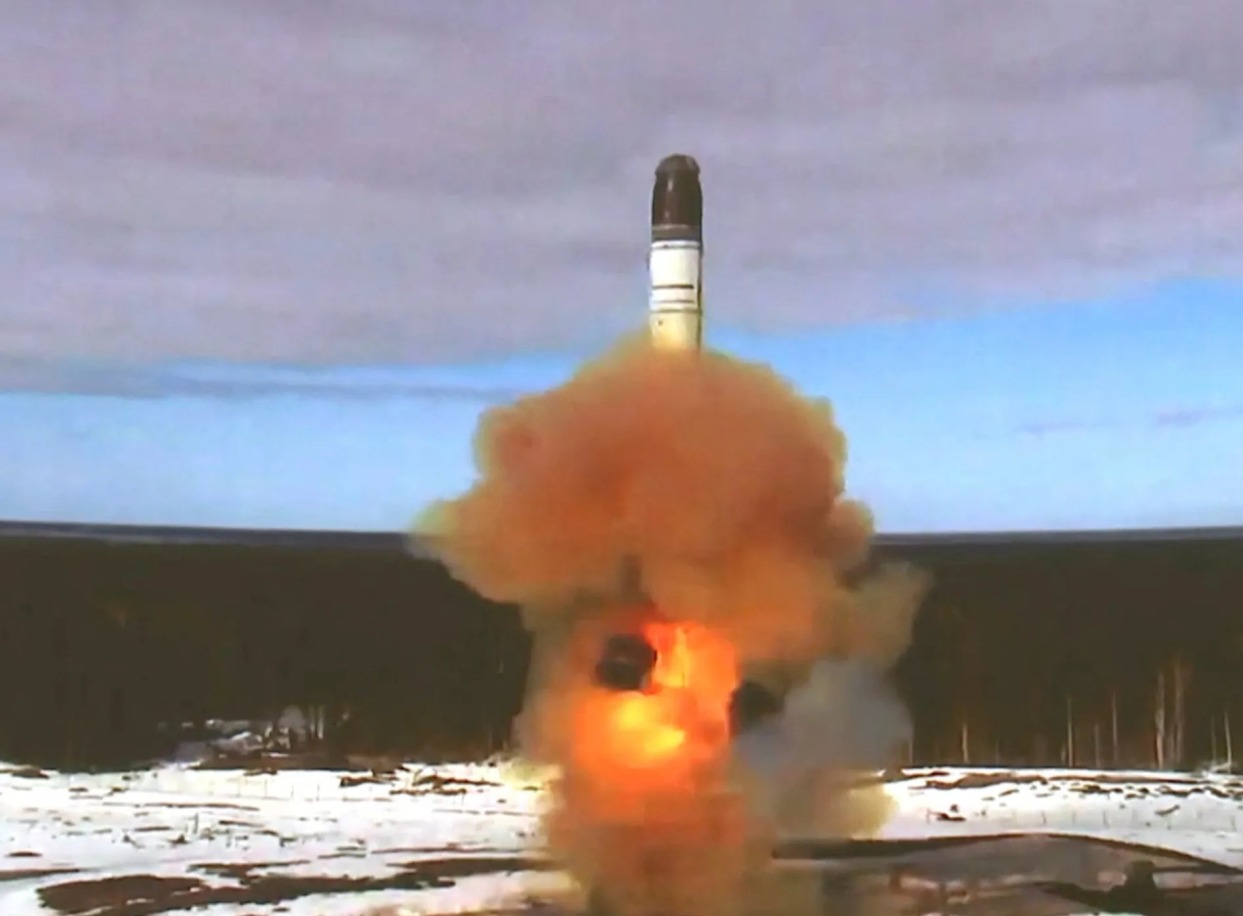On February 29, Russian President Vladimir Putin pledged to deploy the highly-anticipated Sarmat heavy intercontinental missiles (ICBMs) on combat duty.
Designed To Beat China’s JF-17, Korean FA-50 & Even India’s Tejas, Meet USAF’s Trainer Jet, Red Hawk
Russian President Vladimir Putin announced during his address to the Federal Assembly on February 29, highlighting the strategic importance of the Sarmat missile system. He also confirmed the delivery of the first serial Sarmat heavy ballistic missiles to the troops and expressed his commitment to use them in operational locations soon.
“The first serial Sarmat heavy ballistic missiles have also been delivered to the troops. We will soon demonstrate them in the areas where we are on combat duty,” he said.
The Sarmat complex, which features an intercontinental ballistic missile, has garnered international attention for its ability to bypass modern missile defense systems and holds the record for the longest target destruction range globally.

The Sarmat rocket made its debut launch on April 20, 2022, from the Plesetsk Cosmodrome in the Arkhangelsk region. At that time, President Putin noted the unparalleled technological superiority of the Sarmat, drawing attention to its lack of equivalents in the global arena.
Earlier in October 2023, Putin declared the successful completion of the Sarmat missile system’s development. He went on to mention that the remaining steps involved administrative and bureaucratic procedures before transitioning to large-scale production and deployment into active service.
The latest announcement comes three days after Russian Deputy Defense Minister Alexei Krivoruchko disclosed that deploying the Sarmat missile systems was the primary objective for enhancing the capabilities of the Russian Armed Forces this year.
Meanwhile, the Russian President also assured that Russia’s strategic nuclear forces were fully prepared for guaranteed utilization.
He pointed out the substantial increase in the combat capabilities of the Russian Armed Forces during the special operation in Ukraine, citing the fulfillment of the armament plans outlined in his 2018 address.
In addition to the Sarmat missile system, Putin highlighted the operational deployment of the Kinzhal hypersonic aviation missile system and the Zircon sea-based strike system, both of which have played pivotal roles in military operations in Ukraine.
Avangard Hypersonic Warheads, Peresvet Systems On Combat Duty
President Vladimir Putin also disclosed that the Avangard hypersonic warheads and Peresvet laser systems were operational and deployed on combat duty.
“Hypersonic warheads of intercontinental range Avangard and laser systems Peresvet are on combat duty,” Putin declared during his address, underscoring the readiness of these advanced systems.
The Avangard system represents a breakthrough in strategic missile defense, featuring an intercontinental ballistic missile (ICBM) equipped with a gliding winged warhead. Developed by NPO Mashinostroyeniya, based in Reutov, Moscow Region, the Avangard warhead has undergone testing since 2004.
It possesses the remarkable capability to navigate through dense layers of the atmosphere at hypersonic speeds of up to Mach 27, reaching approximately 34,000 km/h. (Avangard can be carried by an intercontinental ballistic missile and travel at up to 27 times the speed of sound (about 21,000 mph, 34,000 kph) as it maneuvers towards its target.
This enables the warhead to alter course and altitude swiftly, rendering it capable of overcoming any existing missile defense systems. President Putin first introduced the Avangard system in March 2018, emphasizing its revolutionary potential to bolster Russia’s defense capabilities.
On the other hand, the Peresvet laser system represents Russia’s first combat laser system. Putin first disclosed the creation of the Peresvet system during his address to the Federal Assembly on March 1, 2018.
At that time, he had said, “I do not want to reveal more details. It is not the time yet. But experts will understand that with such weaponry, Russia’s capacities for defending itself have multiplied.”
In May 2022, Russian Deputy Prime Minister Yury Borisov announced that a new generation of secret laser weapons, including the Peresvet system, was being employed in the Ukraine conflict.
Though detailed information on the capabilities and operations of the Peresvet system remains classified, open sources suggest that approximately four or five Peresvet systems have been deployed in Russia, accompanying its mobile ICBM, Topol-MR.
The Peresvet is also described as a “laser dazzler,” composed of “a laser linked to a gimbaled mirror, all housed within a trailer towed by a truck.”
Western experts speculate that the Peresvet system could potentially disable satellites orbiting at altitudes of up to 1,500 kilometers, encompassing the upper reaches of Low Earth Orbit where numerous Earth-imaging satellites, including those operated by the US National Reconnaissance Office, are positioned (The NRO, a member of the United States Intelligence Community and an agency of the United States Department of Defense, designs, builds, launches, and operates the reconnaissance satellites of the US federal government, and provides satellite intelligence to several government agencies.)
- Contact the author at ashishmichel(at)gmail.com
- Follow EurAsian Times on Google News